Preservation Techniques for Original Drafts
In order to assure the long-term preservation of the two drafts of Lincoln's Gettysburg Address in the Library of Congress collections, in the 1990s the Preservation Directorate commissioned the design and manufacture of two environmental cases, one for each document. In addition, the Library constructed a low temperature vault where these encasements and other Top Treasures of the Library will be permanently stored.
As shown in the images below of the display encasement for the Nicolay copy of the Gettysburg Address, the two cases are constructed of heavy-gauge stainless steel frames with clear Plexiglas panels to allow access and viewing of the documents from both sides of the case. The cases are filled with inert argon gas that replaces all the oxygen in the case thereby virtually eliminating deterioration from oxidation. The argon gas is humidified to a low relative humidity to retain the moisture level required in the document, while reducing the impact of high or fluctuating relative humidity. The Plexiglas filters out ultraviolet wavelengths to further protect the document from damaging non-visible radiation when on exhibition.
Prior to the bicentennial Lincoln exhibition (February–May 2009), the cases were assessed in 2008–2009 to integrate advances in technology and new high performance materials. The installation of new gasket materials and valves, and extensive leak testing of the cases, ensured continued high performance to extend the lifetime of the anoxic environment. This controlled environment protects the documents from damaging fluctuations external to the encasement while minimizing oxidative or hydrolytic reactions within the case. The constant low temperature of the case in the permanent storage area (50º Fahrenheit) ensures further protection from environmental changes, greatly extending the lifetime of these precious documents.
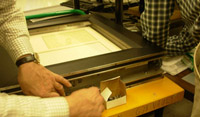
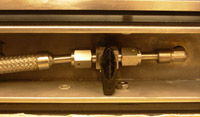
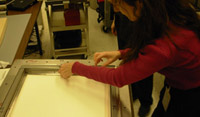


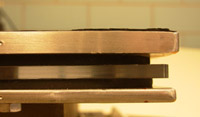
For optimal viewing, the Gettysburg Address is floated in the center of the anoxic case, carefully supported between two layers of Stabiltex™ (a plain weave polyester fabric). The fabric attached to a surrounding window mats. This ensures minimal impact on the document while allowing full viewing of both sides of the document.
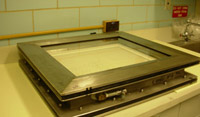
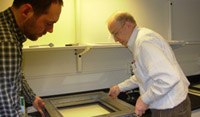
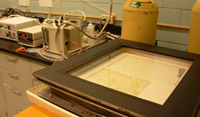
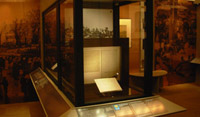
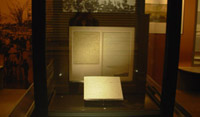
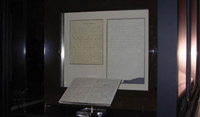
An ongoing program at the Library is the development of visual storage—controlled environment encasements that allow permanent storage of the documents for both storage and exhibition. The design, construction, and assessment of a two-sided case prototype utilizing modern high performance materials will expand the potential for visual storage, further aided by research and analysis of sensors to accurately monitor conditions in the cases.
These non-invasive methods allow the document to remain visually accessible but protected while both on exhibition and in storage. The integration of preventive preservation measures provides a stable non-fluctuating environment for the long-term preservation of these original documents, with the added benefit of precluding the use of any invasive conservation treatment. The Library's two copies of the Gettysburg Address are preserved in a state that assure long-term stewardship of these national treasures for the nation, while ensuring current and future generations safe access to the documents for both enjoyment and research.